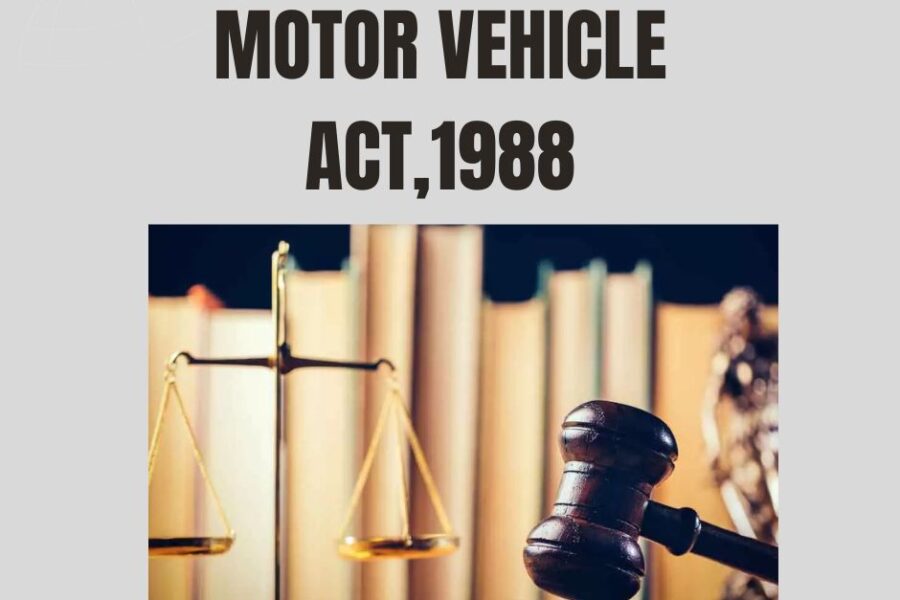Title: Steps to Prove Motor Accident
Welcome to the official blog of the Law Offices of Kr. Vivek Tanwar Advocate and Associates, where we are dedicated to providing litigation support services for matters related to Corporal punishment. In today’s blog post, we aim to shed light on the prevailing issues surrounding the Car Accident Claim Compensation Act, the legal framework in place for their protection, and the steps we can take as a society to combat these acts. Join us as we explore this critical subject and empower you with the knowledge to protect your rights and safety.
INTRODUCTION
A motor vehicle claim, commonly known as a car accident claim or auto insurance claim, is a legal process that individuals undertake to seek compensation for damages resulting from a motor vehicle accident. This can include collisions involving cars, motorcycles, trucks, or any other type of motorized vehicle. Motor vehicle claims typically involve insurance companies, and the goal is to determine who is at fault for the accident and to what extent each party is responsible for the damage
Claims Under Section 166 of the Motor Vehicle Act
section 166 of the Motor Vehicle Act of 1988 specifies who can claim MACT if they are involved in a traffic accident. An individual might be regarded as the rightful claimant and seek compensation from the Motor Accidents Claim Tribunal under Section 166 IPC (Chapter XII) of the Motor Vehicles Act 166 if:
- These are individuals or authorized representatives of those who have been injured in a vehicle accident.
- They are the legal proprietors of the property that was damaged in the accident.
- They are the legal heirs/representatives of a person who died as a result of the accident.
- They are the legitimate proprietors of any property damaged in the accident.
The claimant may make a compensation claim under Section 166 IPC with any of the Vehicle Accident Claim Tribunals listed below:
- The claims tribunal whose jurisdiction the accident occurred.
- The claims tribunal whose jurisdiction the victim remains under.
- The claims tribunal whose jurisdiction the owner of the vehicle involved in the accident remains.
section 166 of the Motor Vehicle Act of 1988 specifies who can claim MACT if they are involved in a traffic accident. An individual might be regarded as the rightful claimant and seek compensation from the Motor Accidents Claim Tribunal under Section 166 IPC (Chapter XII) of the Motor Vehicles Act 166 if:
- These are individuals or authorized representatives of those who have been injured in a vehicle accident.
- They are the legal proprietors of the property that was damaged in the accident.
- They are the legal heirs/representatives of a person who died as a result of the accident.
- They are the legitimate proprietors of any property damaged in the accident.
The claimant may make a compensation claim under Section 166 IPC with any of the Vehicle Accident Claim Tribunals listed below:
- The claims tribunal whose jurisdiction the accident occurred.
- The claims tribunal whose jurisdiction the victim remains under.
- The claims tribunal whose jurisdiction the owner of the vehicle involved in the accident remains.
Here are some general steps that may help you prove fault in a car accident claim:
- Collect Evidence at the Scene:
- If it’s safe to do so, document the accident scene by taking photographs of the vehicles, the surrounding area, and any relevant road signs or signals.
- Obtain the contact information of any witnesses and ask them if they would be willing to provide statements.
- Exchange Information with the Other Driver:
- Exchange contact information, insurance details, and vehicle registration information with the other driver involved in the accident.
- File a Police Report:
- If the police are called to the scene, ensure that they file a report. This report may contain valuable information about the accident and their assessment of fault.
- Seek Medical Attention:
- Even if your injuries seem minor at first, it’s crucial to seek medical attention. Medical records can serve as evidence of the injuries you sustained as a result of the accident.
- Gather Additional Evidence:
- Obtain any available surveillance footage from nearby businesses or traffic cameras that may have captured the accident.
- Collect any relevant documents, such as repair estimates, medical bills, and statements from healthcare providers.
- Document Your Injuries:
- Keep a record of your injuries, including photographs of visible injuries and a journal documenting your pain levels, medical treatments, and the impact of the injuries on your daily life.
- Obtain Expert Opinions:
- Consult with accident reconstruction experts or other relevant professionals who can provide expert opinions on the circumstances of the accident.
- Contact Your Insurance Company:
- Report the accident to your insurance company as soon as possible. Provide them with all the details and evidence you have collected.
- Consult with an Attorney:
- If you believe you were not at fault, it’s advisable to consult with an attorney experienced in personal injury or car accident cases. They can guide you through the legal process, help gather evidence, and represent your interests.
We are a law firm in the name and style of Law Offices of Kr. Vivek Tanwar Advocate and Associates at Gurugram and Rewari. We are providing litigation support services for matters related to motor vehicle claims..

